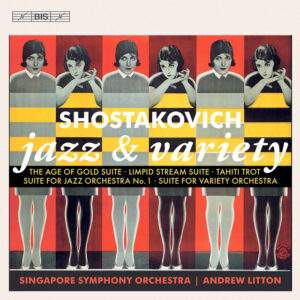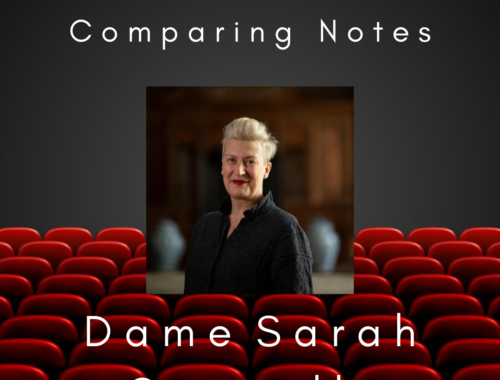GRAMOPHONE Review: Shostakovich ‘Jazz & Variety’ – Singapore Symphony Orchestra/Litton
 Shostakovich’s well-developed sense of irony is so intrinsically wrapped up with his love of popular music – especially that which the Soviet establishment regarded as ‘trivial’ or better yet ‘subversive’ – that it’s sometimes hard to discern just how cynical or otherwise he’s being in celebrating it. Andrew Litton brings an American’s inbred feeling for popular song and jazz to these racy selections and as Music Director of New York City Ballet he instinctively ‘gets’ the footwork and physicality of the two featured ballets not least in the keenness of articulation and rhythmic pizzazz that he and the Singapore Symphony bring to them.
Shostakovich’s well-developed sense of irony is so intrinsically wrapped up with his love of popular music – especially that which the Soviet establishment regarded as ‘trivial’ or better yet ‘subversive’ – that it’s sometimes hard to discern just how cynical or otherwise he’s being in celebrating it. Andrew Litton brings an American’s inbred feeling for popular song and jazz to these racy selections and as Music Director of New York City Ballet he instinctively ‘gets’ the footwork and physicality of the two featured ballets not least in the keenness of articulation and rhythmic pizzazz that he and the Singapore Symphony bring to them.
They are indeed ‘easily assimilated’ into the sound and style and sheer audacity of what makes them unmistakably Shostakovian. Not that you’d naturally make the connection between football (it always pulls me up short) and Western decadence in the music of The Age of Gold. High-end parody and slapstick would seem to be the name of the game here fulled no doubt by a metaphorical abundance of English beer and loose women. When Shostakovich is feeling racy there’s always a Polka in the mix and always a wonky xylophone (the end of pier variety) leading from the front. The raucous finale here is three-ringed circus time and brilliantly foreshadows the unexpected second and third movements of the Sixth Symphony.
But it’s the central adagio of the Age of Gold suite that digs deeper into the eroticism that unsettled the Soviet powers that be. Soprano saxophone is nothing if not sexy even when it’s at its most plangent – and its gloriously sinewy melody (elaborated by solo violin) no doubt underpins one of those elaborate Tchaikovsky-inspired pas de deux, the intense cinematic climax strongly redolent of the discredited Lady Macbeth of Mtsensk.
The Limpid Stream is even more of an oddity – ostensibly a balletic hymn to Agriculture and the heroic efforts of Soviet farmers in feeding the Motherland (even Putin couldn’t make this up). What the suite offers, though, is the kind of divertissement of sweetmeats again suggestive of Tchaikovsky (albeit with added sauce). And again there is a rather gorgeous pas de deux led by the lush solo cello of the Singapore Symphony’s Ng Pei-Sian.
The Suite for Variety Orchestra might prompt the rejoinder ‘you’re gonna need a bigger band’ – and with four saxes, ten brass, accordion and copious percussion Shostakovich duly obliges. There’s a burst of his Festive Overture in ‘Dance No 1’ and more besides that is big and blowsy. The familiar Suite for Jazz Orchestra No 1 has more of a Weimar feel with Bertolt Brecht hovering in the wings for the ‘Foxtrot’ with its banjo-strumming and cheesy Hawaiian Guitar.
The disc sounds great and Youmans’ ‘Tea for Two’ in the guise of Tahiti Trot (do Russians really dream of escaping to Tahiti?) – all dressed up in its plush Art Deco garb – is, of course, a good way of signing off.
You May Also Like

A Streetcar Named Desire, Young Vic
02/08/2014
COMPARING NOTES: Dame Sarah Connolly in Conversation
17/08/2020

